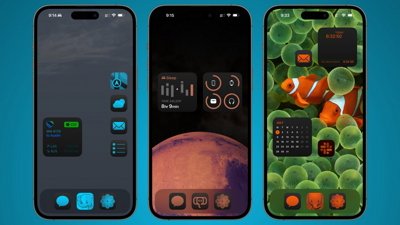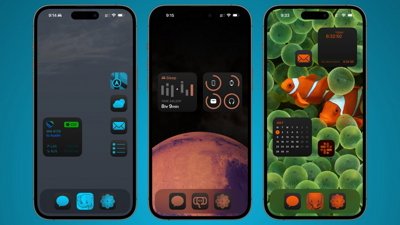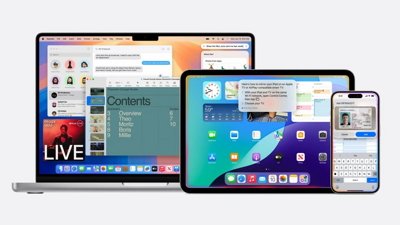WWDC is an Apple event that takes place over five days, with the keynote address on the first day. The keynote has become increasingly popular among non-developers due to the presentation and the hype it generates.
Before the COVID-19 pandemic, Apple would invite thousands of developers to attend the conference in person. Attendees would fill the Steve Jobs Theater on the Apple Park campus to catch a glimpse of the future and get a chance to interact with Apple engineers face-to-face.
After the threat of the pandemic was understood, Apple pivoted to a digital-only conference in 2020. The keynote presentation was filled with panning drone shots, high-quality editing, and fast-moving segments. All sessions and other keynotes were digital as well, with sessions taking place via Webex video chats.
The 2021 WWDC was digital-only as well due to the ongoing pandemic. With the shift back to normalcy in 2022, Apple relied on a hybrid approach.
At each WWDC, Apple unveils its latest operating system updates and software changes. Though the conference is meant to be dedicated to developers, Apple sometimes sneaks in hardware or service updates as well.
Updates are expected for the following operating systems:
The following developer tools are also usually updated:
The keynote address isn't able to reveal every change and update to all of Apple's platforms, so the remainder of the week is dedicated to sessions. These sessions cover all the new features and documentation surrounding what updates developers will need to perform before the software's fall release.
Apple has been known to announce some details ahead of WWDC to keep the conference focused on developers. The keynote is often packed to the brim with software details, so some hardware features or service updates are announced via a press release before the event.
The company has diverted from its usual announcement cycle to reveal hardware or services during a WWDC keynote before. Some notable exceptions included Apple Music in 2015, HomePod in 2017, the M2 MacBook Air in 2022, and Apple Vision Pro in 2023.
WWDC 2024
June 10, 2024
Apple held WWDC 2024 to announce the usual range of operating system updates. But instead of surprising with new hardware, the company finally unveiled its plans for Apple Intelligence.
The trend of adding new customization options to iOS and iPadOS continued, while Apple meshed some app features together as well. Despite AI catching everyone's attention, it was still a feature-filled set of OS updates.
Operating systems announced:
- iOS 18
- iPadOS 18
- macOS Sequoia
- watchOS 11
- tvOS 18
- visionOS 2
Some expected an M3 Ultra and updates to the Mac Studio and Mac Pro, but that didn't happen. It seems Apple will skip M3 Ultra and wait for M4 Ultra in 2025.
Apple Intelligence focused on local models that run on-device, but can call out to a Private Cloud Compute server run by Apple if more power is needed. Users will benefit from a more intelligent Siri, Writing Tools, and Image Playground.
WWDC 2023
June 5-9
Apple continued its trend of announcing social and customization features across its operating systems. A few surprises were also revealed, like the Apple Vision Pro and the Mac Pro with Apple Silicon.
Operating system releases
Rumors had suggested 2023 would be a quiet year for software, but Apple pushed back on that notion with interactive widgets on iOS, a redesigned watchOS, and an all-new platform called visionOS. Developers are in for a busy summer as they prepare for spatial computing.
WWDC 2022
June 6-10
This hybrid in-person and digital event focused on customization in iOS and developer APIs. Stage Manager stole the conversation as a new multitasking feature for iPad and Mac.
Updates announced
Apple also announced the M2 processor and M2 MacBook Air during the keynote. This was a surprise, as the M1 still hadn't arrived in the Mac Pro and never would.
WWDC 2021
June 7-11
This digital-only event focused on social features and privacy. Cross-platform features were also enhanced thanks to Universal Control and SharePlay.
Updates announced
Apple also introduced Focus Mode, a feature that replaces Do Not Disturb with refined controls over what notifies you when. Other improvements include bringing Shortcuts to macOS and free widget placement in iPadOS.
WWDC 2020
June 22-26
The ongoing pandemic created a lot of uncertainty going into June 2020, but Apple managed to come out swinging with a high-quality pre-recorded event. Since many of the features are worked on over the previous year, Apple didn't have any time to prep for work-from-home-focused releases.
Updates announced
- iOS 14
- iPadOS 14
- macOS Big Sur
- watchOS 7
- tvOS 14
Apple continued the trend of pushing more iOS-like features to the Mac and unveiled App Tracking Transparency. Now, apps must notify users when they are going to track them, what data is collected, and how it is used.
Most importantly, Apple announced it would transition the Mac to custom Apple Silicon, away from Intel. The transition would take two years at most and bring ARM to the Mac.
WWDC 2019
June 3-7
There were some surprises outside of the usual operating system updates during the 2019 developer conference. Apple revealed iPadOS, the new operating system for the iPad that takes advantage of the larger display. It also shared a preview of the Mac Pro and Pro Display XDR, a top-end Mac for professionals that would debut later in the year.
Updates announced
- iOS 13
- iPadOS 13
- macOS Catalina
- watchOS 7
- tvOS 14
Other new features included SideCar, which enables using iPads as an external display for the Mac. Also, Apple Watch gained menstrual cycle tracking.









 Malcolm Owen
Malcolm Owen








